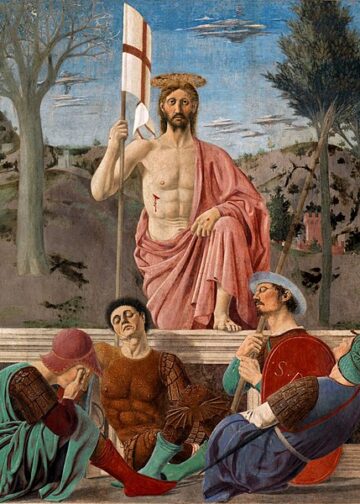Located between Umbria and Tuscany and surrounded by the Appennini mountains, the Valtiberina, which owes its name to the Tiber River that emerges not far away, was a decisive place for both historical and artistic events in Italy, thanks to its particularly good position. These reasons make it an ideal place to visit.
The best way to begin the trip, is to start from Città di Castello, located in the Umbrian part of the valley. It’s a beautiful town that enjoyed its heyday of splendor between the Middle Ages and the Renaissance, thanks also to the noble Vitelli family, who were the powerful lords of the area. Of their residences, the most important is undoubtedly Palazzo Vitelli alla Cannoniera, a splendid 16th century building with entirely decorated walls and an exceptional garden with geometric shapes. Today the palace is the Municipal Art Gallery, that houses masterpieces by Renaissance artists, among which one of Raphael’s early works stands out.

But Città di Castello is also a must-see destination for contemporary art lovers. This is indeed the birthplace of Italian visual artist, painter, sculptor, and physician Alberto Burri, and a very rich collection of his works is housed between Palazzo Albizzini and the former tobacco drying houses.
Crossing the border and entering Tuscany it is worth stopping in Monterchi, an enchanting village where it’s possible to find one of the most famous works of the Italian Renaissance, The Madonna del Parto by Piero della Francesca, located in a space specially prepared by the municipality of the village.

Leaving Monterchi and following the signs for eight kilometers, we come upon Anghiari. Recently acclaimed by CNN as one of the 15 most beautiful cities in Europe, the town has kept its medieval aspect intact with its buildings and alleys. In 1440 one of the most important battles of the Renaissance took place here, fought between Florence and Milan, and years later Leonardo da Vinci tried to represent the event on a wall of the Palazzo Vecchio in Florence. Sadly, due to the inadequacy of the technique that he adopted, the work was lost. Despite this, it is possible to visit a local well-set up museum dedicated to that historic battle.
Continuing in a north-easterly direction for a few kilometers you arrive in Sansepolcro.

It’s a graceful town with a Renaissance appearance that gave birth to Piero della Francesca, and the Civic Museum holds some of his masterpieces, namely, the Resurrection and the Polyptych of Mercy, images often found in art history books. Other artists such as Pontorno and Andrea Della Robbia are also represented in this collection.
To round out this itinerary, from Sansepolcro head north-west for about 15 kilometers to reach Caprese Michelangelo, in the province of Arezzo, the village that gave birth to one of the most famous artists of all time, Michelangelo Buonarroti. Sansepolcro is surrounded by woods, which lend it a bucolic atmosphere of peace and well-being. To remember its most illustrious son, there is an amazing museum comprised of three buildings, and one of these, Palazzo del Podestà, is where Michelangelo was born. It’s rich in material and artistic works dedicated to him, and you can visit the small church in which he was baptized.












